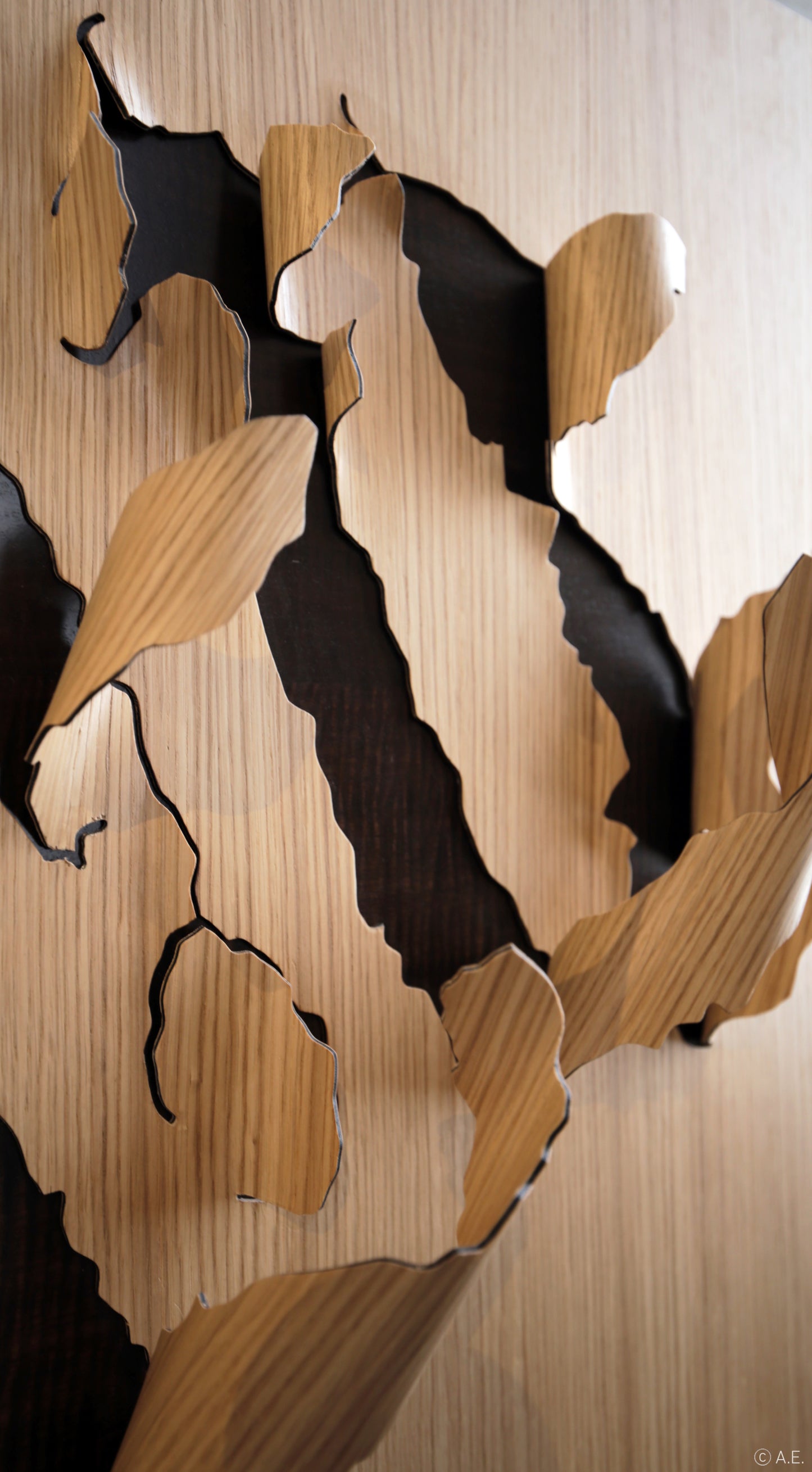Steven Leprizé
C°Wood
C°Wood
Details
Price & Availability
Steven Leprizé
Lauréat de la récompense Talents d’exception du Prix Liliane Bettencourt pour l'Intelligence de la Main® 2017
Learn more
In theory, to bend wood, we need a mold. This matrix is very expensive to produce, but is financially amortized by the repetition of moldings during a series. By creating prototypes, unique pieces, or small series, we wanted to create a wood that could be easily and intuitively bent. We therefore mixed plastic sheets with wood sheets to create a material that becomes malleable under the effect of heat. It can be bent, twisted without any mold during cooling with simple tensioners or holding clamps. There is a distension of about 5% observed depending on the radii of curvature. The thickness to be chosen therefore depends on the design of the object and its function. In order to achieve optimal bending radii, it is essential to put the grain of the wood perpendicular to the bending direction. To significantly increase these bending radii, we have partnered with the "Bois Dentelle Dalbergia" technology and its microscopic perforations. This technology also works with tearwood.
Product details
Product details
Manufacturing process
Manufacturing process
Distributors
Distributors










